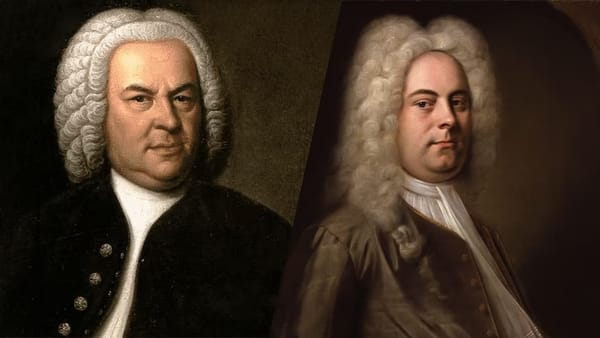Resonant Strings: A Journey Through the History of the Classical Guitar
From ancient Mesopotamian lutes to Torres’s fan-braced masterpieces and Segovia’s concert-hall triumphs, discover how the classical guitar evolved in form, technique and repertoire to become one of the world’s most beloved instruments.

The classical guitar, with its warm, resonant tones and elegant form, occupies a cherished place in the world of Western art music. From humble beginnings as a plucked string instrument in ancient civilisations to its modern incarnation as a concert instrument, the classical guitar has undergone centuries of evolution in shape, technique and repertoire. This article traces its journey from antiquity through the Renaissance, Baroque and Romantic eras, culminating in the establishment of the modern classical guitar tradition.
Ancient Precursors
The story of the classical guitar begins long before the six-string instrument familiar to us today. As early as 3,000 BCE, the ancient Mesopotamians were crafting pear-shaped lutes, plucked with plectra, to accompany ritual music. Similar instruments appeared in ancient Egypt, Greece and Rome; the Greek kithara and Roman cithara were plucked zithers with wooden soundboards, often used for solo and ensemble performance. These early lutes typically had three or four strings and were held across the body, much as a modern guitar is.
During the migration period and early Middle Ages, a variety of plucked instruments—such as the Arabic ‘ūd—spread across Europe via the Islamic Caliphates of Spain. The term ‘guitar’ itself is derived from the Persian qīṯāra and the Arabic qīṯāra or ūt, reflecting this Near Eastern lineage. By the 8th and 9th centuries, when the Moors held sway in the Iberian Peninsula, the lute and its relatives had become well integrated into the musical fabric of Christian and Muslim Spain.
The Medieval and Renaissance Guitar
The Four-Course Renaissance Guitar
In medieval Europe, plucked instruments such as the citole, gittern and mandora coexisted alongside bowed fiddles. By the late 15th century, a small, four-stringed instrument known simply as the “guitarra” began to appear in Spain, Italy and France. This early Renaissance guitar typically had four courses (pairs) of gut strings, tuned in unison or octaves. Though its tonal range was limited compared to later guitars, its portability and relative ease of play made it popular among amateur musicians and courtly audiences.
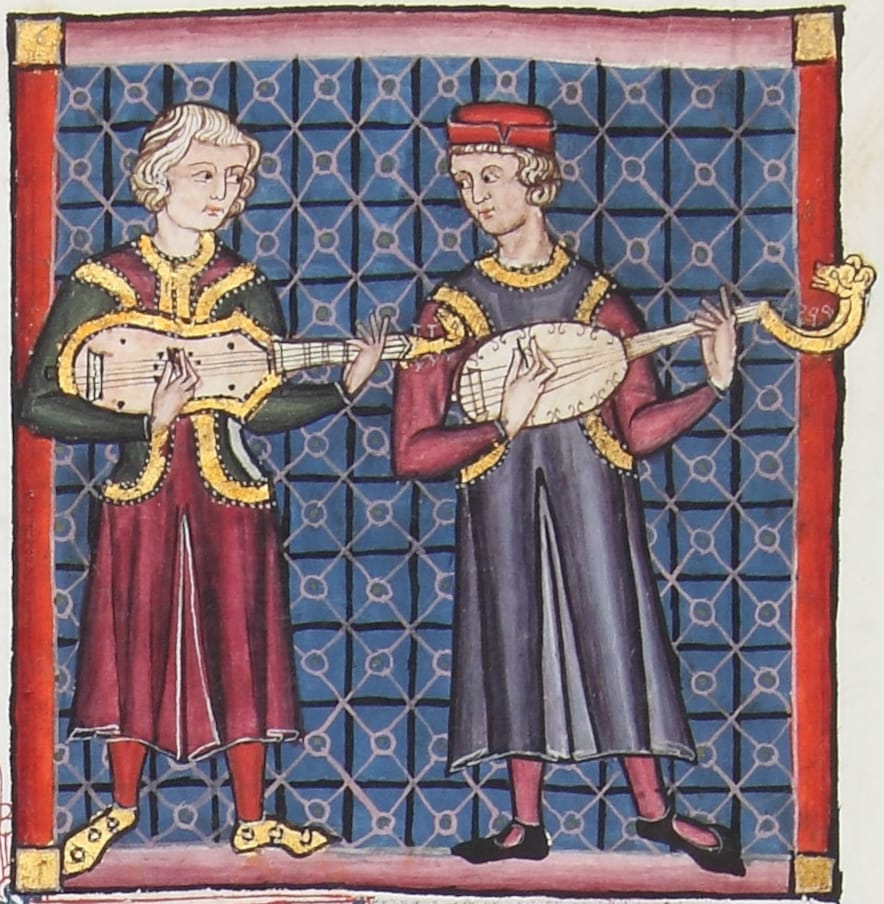
Popular sources such as the Libro de música de vihuela by Luis de Milán (published in 1536 in Valencia) and El Maestro by Luis de Narváez (1547) demonstrate that players used a variety of right-hand techniques—plucking with fingertips and nails—to produce both rhythmic strumming (rasgueado) and delicate solo lines. Notably, the Spanish vihuela, a six-course instrument resembling both the guitar and the lute, also flourished in this period, influencing the subsequent development of the guitar’s technique and repertoire.
Transition to Five Courses
By the late 16th century, the four-course guitar began to give way to a five-course model in Spain and Italy. Printed guitar tablatures by authors such as Giovanni Paolo Foscarini (Venice, 1630) and Francesco Corbetta (Paris, 1646) reveal increasingly sophisticated music for the instrument, including dances, fantasias and preludes. Strumming styles remained prevalent, yet the guitar was emerging as a serious solo instrument.
The Baroque Guitar
The Baroque period (circa 1600–1750) witnessed the apex of the five-course guitar. Makers such as René Voboam in France and Matteo Sellas in Venice crafted instruments with ornate pegboxes, rosetted soundholes and backs of alternating light and dark woods. Baroque guitarists—including Robert de Visée at the court of Louis XIV—composed suites in standard dance forms (allemande, courante, sarabande, gigue) that exploited the instrument’s expressive potential.
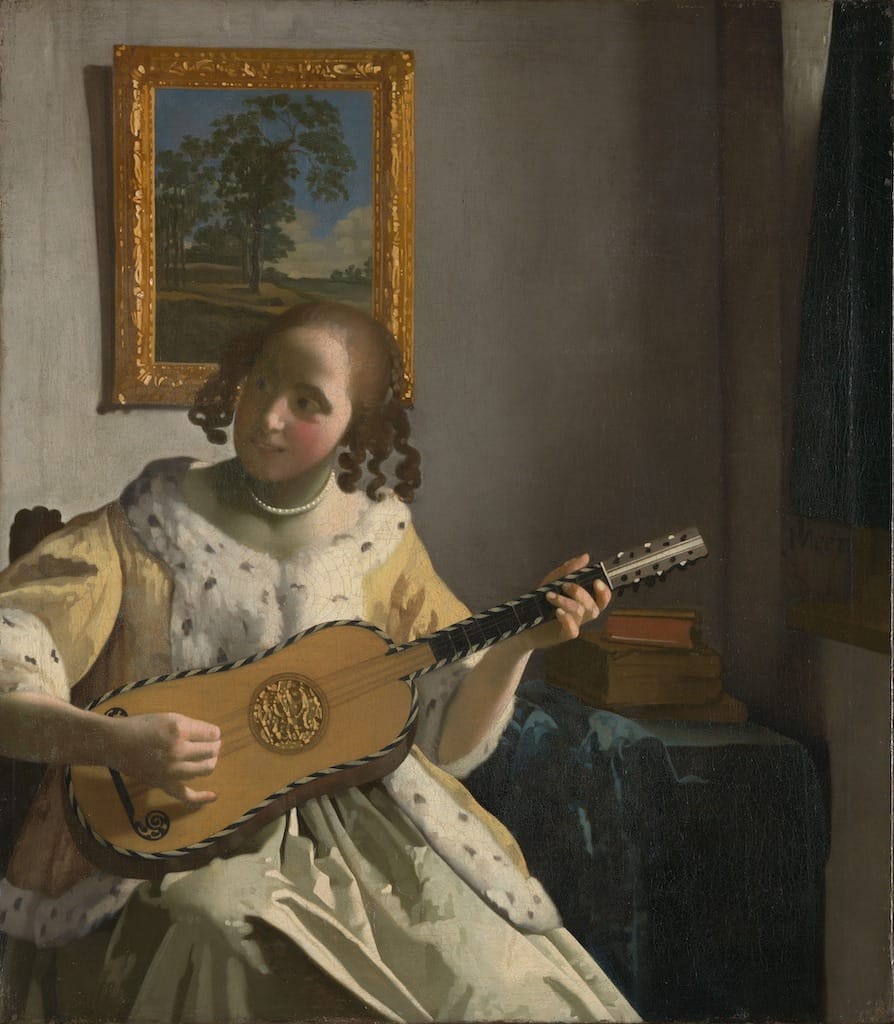
Notably, the guitar repertoire began to incorporate both battuto (strummed) and pizzicato (plucked) textures, often alternating within a single piece. Composers like Francesco Corbetta and Gaspar Sanz (Spain) wrote instructional treatises that circulated widely, codifying techniques and appealing to both amateur and professional players. Despite these advances, the instrument’s gut strings and relatively small body limited its projection, confining its use largely to intimate chamber and domestic settings.
The Classical Period and the Six-String Guitar
Emergence of the Six-String Design
Around the turn of the 19th century, the guitar underwent a pivotal transformation: the adoption of six single strings instead of five courses. This innovation is often attributed to Spanish makers such as Joséf and Manuel Ramírez and Antonio de Torres, though pedagogues including Fernando Sor and Mauro Giuliani were instrumental in popularising the new model across Europe.
The six-string guitar offered an expanded chromatic capability and a more robust tone. It also facilitated increased polyphonic writing and extended range, enabling composers to craft music of greater technical and expressive complexity. The Spanish guitar tradition, with its emphasis on clear articulation and lyrical melody, meshed well with the Classical era’s aesthetic values of balance and refinement.
Pioneers of the Classical Guitar Repertoire
Fernando Sor (1778–1839), often called the “Beethoven of the Guitar,” published a prolific body of works—studies, sonatas and variations—that exploited the new instrument’s attributes. His Méthode pour la Guitare (1830) codified technique for students across Europe. Simultaneously, Mauro Giuliani (1781–1829), an Italian guitarist and teacher based in Vienna, composed virtuoso concertos for guitar and orchestra, championing the instrument on the grand stages of the Austrian capital.
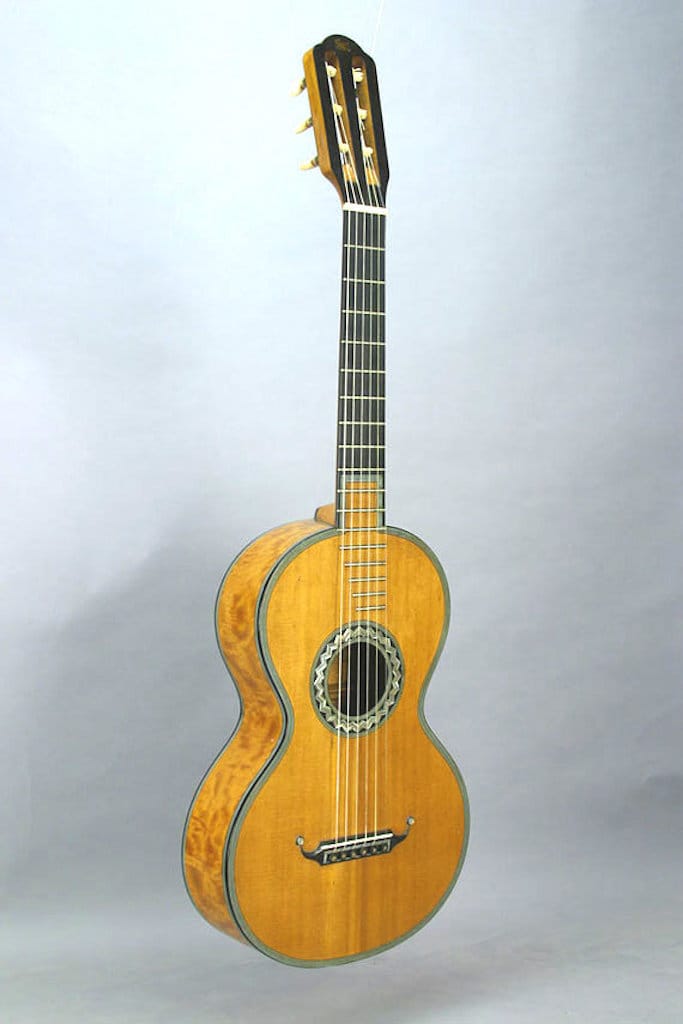
In Paris and London, luthiers such as Jean Léon Marie Baudouin and René François Lacôte crafted guitars with braced spruce tops and mahogany backs, refining the design introduced by Torres in Spain. This nascent Classical guitar achieved a degree of sophistication in tone and projection, solidifying its place within salon concerts and chamber music.
The Romantic Era and Beyond
The 19th century saw fluctuating fortunes for the guitar. Following the decline of the salon culture and the rise of the piano and large orchestral concerts, the guitar receded somewhat from the public eye. Nevertheless, virtuosi such as Giulio Regondi (1822–1872) performed to acclaim, and composers including Johann Kaspar Mertz in Vienna and Napoléon Coste in Paris continued to expand the repertoire.
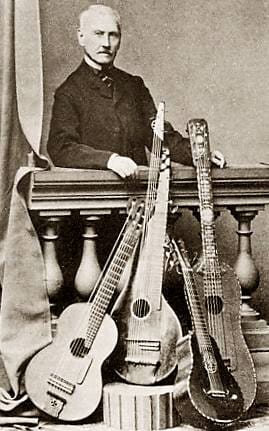
In the late 19th century, Spain witnessed a revival of nationalistic guitar music, with composers like Francisco Tárrega (1852–1909) infusing the instrument with a distinctly Spanish flavour. Tárrega’s works, including the beloved Recuerdos de la Alhambra and Capricho Árabe, showcased advanced tremolo techniques and expressive lyricism. Equally significant was his role as a pedagogue: Tárrega taught a generation of guitarists, systematised right-hand fingering and laid the groundwork for modern technique.
The Golden Age of Guitar Making: Antonio de Torres
No account of the classical guitar’s history would be complete without acknowledging Antonio de Torres Jurado (1817–1892). Often likened to Stradivari for the violin, Torres redefined guitar construction around 1850–1870. His innovations included:
- Fan bracing: A system of wooden struts arranged in a fan-like pattern beneath the soundboard, enhancing resonance.
- Increased body size: A larger lower bout improved volume and bass response.
- Standardised proportions: Uniformity in scale length and body shape across instruments.
Torres’s guitars combined power, balance and clarity, setting a template that remains largely unchanged in modern classical guitar making. Many contemporary luthiers directly emulate his designs, and surviving Torres instruments are prized for their tonal qualities.
Twentieth-Century Renaissance
The early 20th century saw renewed interest in the classical guitar, led by virtuosos such as Andrés Segovia (1893–1987). Segovia’s tireless advocacy—including transcriptions of Bach’s lute suites and commissions from composers like Heitor Villa-Lobos—elevated the guitar to concert-hall status. His technical mastery demonstrated the instrument’s capacity for nuance and complexity, while his teaching planted the seeds of a global guitar school.
Parallel movements emerged in Latin America, where composers such as Agustín Barrios Mangoré in Paraguay and Leo Brouwer in Cuba expanded the guitar’s idiom with indigenous folk influences and avant-garde techniques. In the 1950s and 1960s, the advent of nylon strings—replacing the earlier gut and later steel variants—further refined tone and stability, becoming the standard for classical performers.
Contemporary Developments
Today, the classical guitar enjoys vibrant worldwide popularity. Conservatoires and university music departments offer specialised guitar programmes; competitions and festivals proliferate; and recording technology enables artists to reach international audiences. Modern luthiers continue to experiment with tonewoods, composite materials and bracing patterns, while some artists explore extended techniques—percussive effects, prepared guitar and microtonal tunings.
Contemporary repertoire embraces both solo and chamber formats, with composers such as Toru Takemitsu, Hans Werner Henze and Dai Fujikura contributing significant works. Furthermore, cross-genre collaborations—jazz, world music and electronic—have broadened the guitar’s appeal beyond classical circles.





